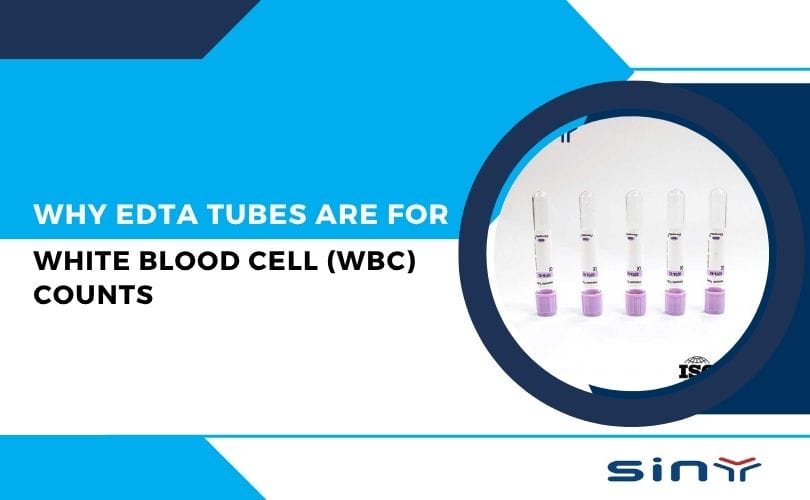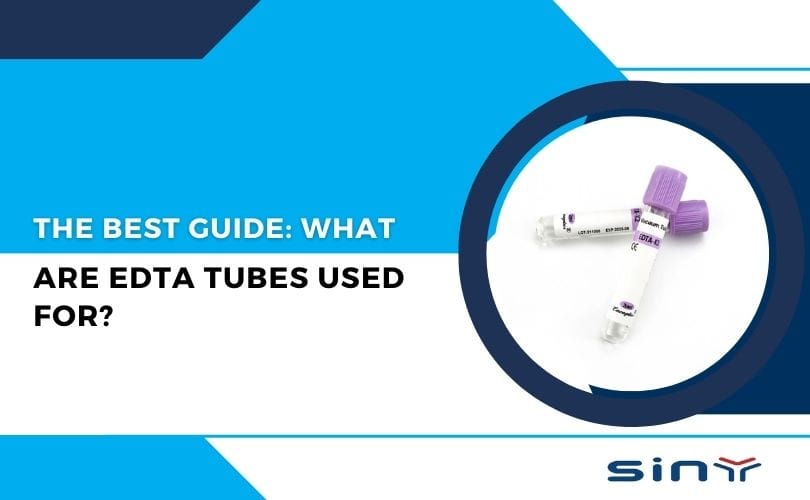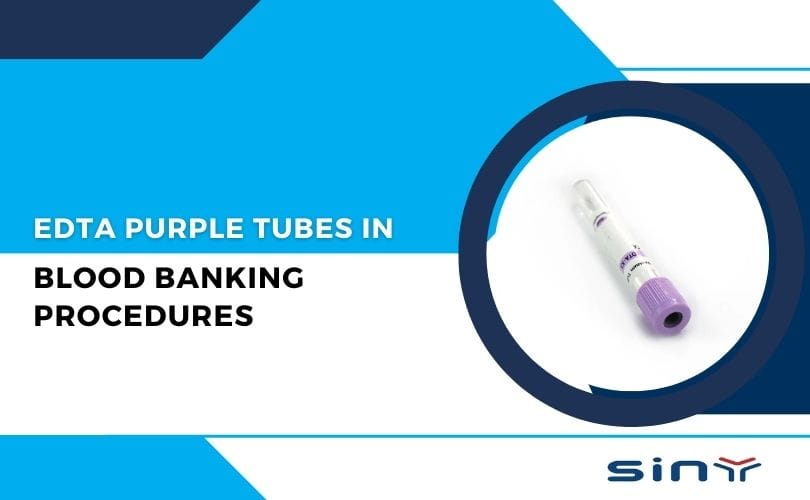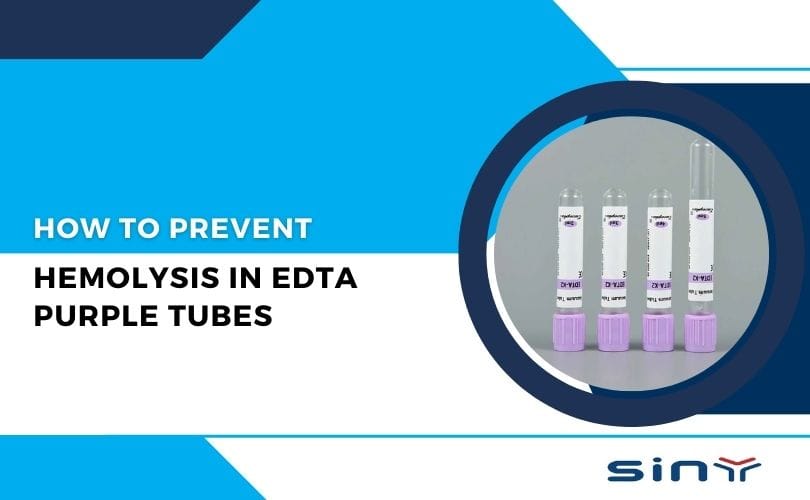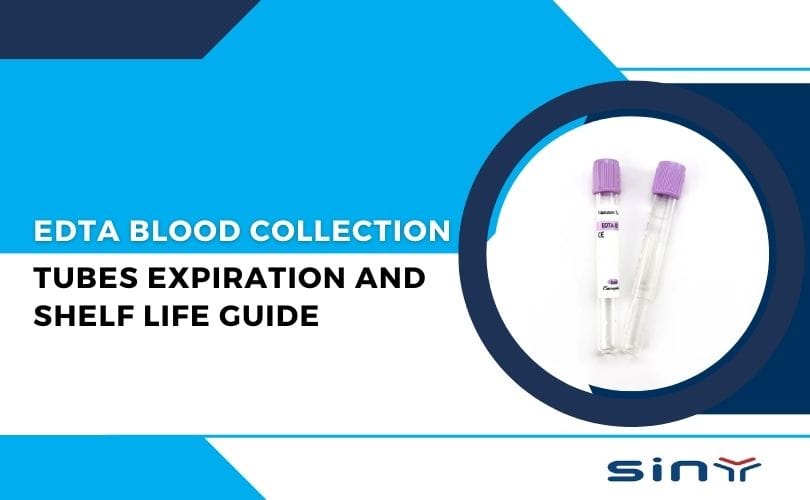White blood cells (WBCs) are a critical component of the human immune system, playing a vital role in defending the body against infections and diseases. Accurate measurement of WBC counts is essential for diagnosing various medical conditions, from infections to autoimmune disorders. Among the various blood collection tubes available, EDTA tubes have emerged as the preferred choice for WBC counts. This blog delves into the reasons behind this preference, the science behind EDTA tubes, and their advantages in clinical and laboratory settings.
What Are EDTA Tubes?
EDTA tubes are specialized blood collection tubes that contain ethylenediaminetetraacetic acid (EDTA), an anticoagulant that prevents blood from clotting. These tubes are widely used in hematology for tests that require whole blood, such as complete blood counts (CBC) and WBC differentials. EDTA works by binding to calcium ions in the blood, which are essential for the coagulation process.
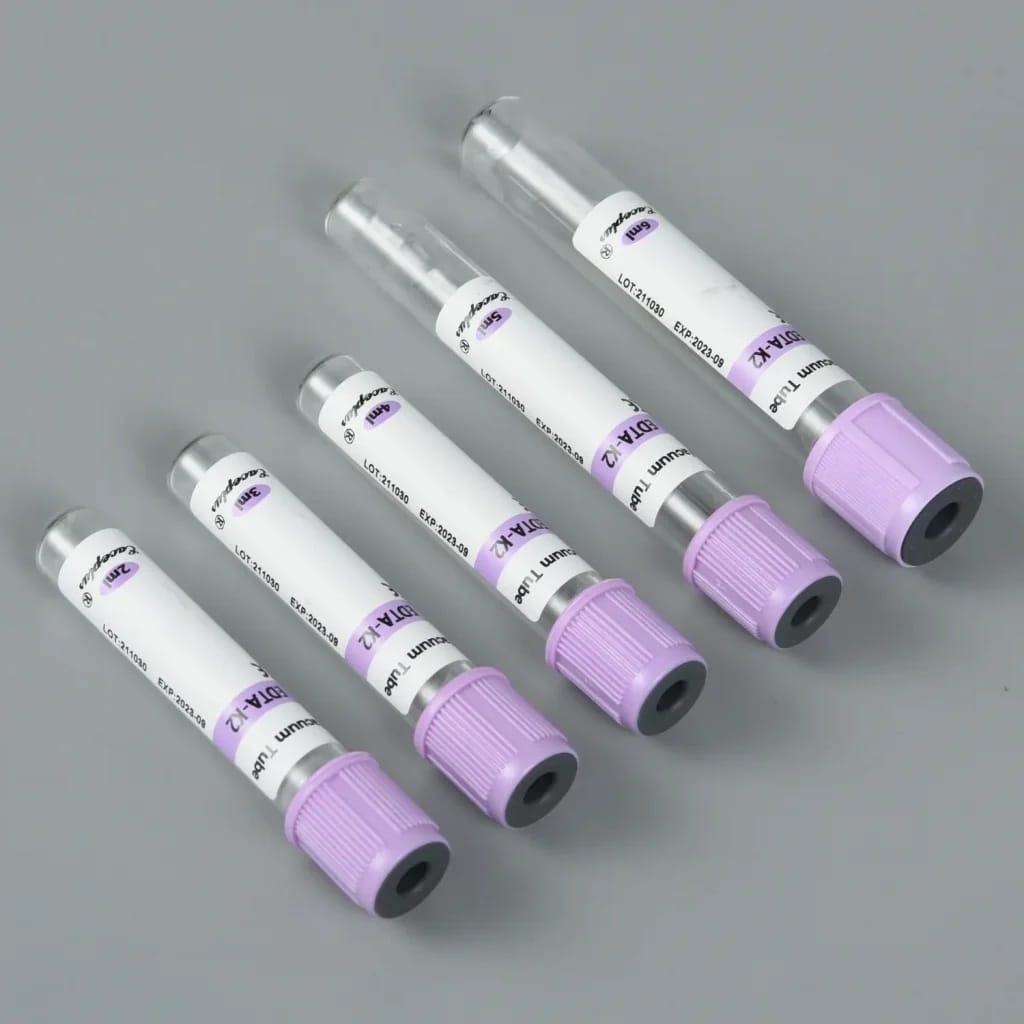
EDTA tubes come in various sizes, such as 2 mL, 3 mL, and 10 mL, and are often color-coded with lavender or purple tops for easy identification. They are manufactured by reputable companies like Sinymedical and are available for purchase on platforms like EDTA Tube.
The Importance of Accurate WBC Counts
White blood cells are categorized into five main types: neutrophils, lymphocytes, monocytes, eosinophils, and basophils. Each type has a specific function in the immune system, and their counts can provide valuable insights into a patient’s health.
For example, a high WBC count (leukocytosis) may indicate an infection, inflammation, or leukemia, while a low WBC count (leukopenia) could suggest bone marrow disorders or autoimmune diseases. Accurate WBC counts are crucial for diagnosing these conditions and monitoring treatment efficacy.
What Are EDTA Tubes and How Do They Work?
Ethylenediaminetetraacetic acid (EDTA) is a powerful anticoagulant used in blood collection tubes to prevent clotting by binding calcium ions, which are essential for the coagulation process. By chelating calcium, EDTA ensures that blood remains in a liquid state, preserving the integrity of cellular components for accurate analysis. EDTA tubes, typically identified by their purple or lavender caps, are designed specifically for hematological tests, including white blood cell counts, complete blood counts (CBC), and blood smear evaluations.
Mechanism of EDTA in Blood Preservation
EDTA works by forming insoluble calcium salts, effectively halting the clotting cascade. This is critical for tests that require whole blood or plasma, as clotting can distort cell morphology and lead to inaccurate results. Unlike other anticoagulants like heparin or sodium citrate, EDTA is uniquely suited for white blood cell analysis because it:
Preserves Cell Morphology: EDTA maintains the shape and structure of white blood cells, red blood cells, and platelets, ensuring they remain intact for microscopic examination and automated analysis.
Prevents Clotting Artifacts: By inhibiting clot formation, EDTA ensures that white blood cells are not trapped in clots, which could lead to falsely low counts.
Minimizes Hemolysis: EDTA reduces the risk of red blood cell breakdown (hemolysis), which can interfere with white blood cell counts and other hematological parameters.
For a deeper understanding of how EDTA tubes function, explore our detailed guide on What is an EDTA Tube?. High-quality EDTA tubes, such as those offered by Siny Medical, are designed to meet international standards, ensuring precision in diagnostics.
Why EDTA Tubes Are the Go-To Choice for White Blood Cell Counts
The preference for EDTA tubes in white blood cell counts stems from their ability to provide consistent, accurate, and reliable results. Here’s a detailed look at why EDTA tubes are favored over other anticoagulants like heparin or sodium citrate:
Superior Preservation of White Blood Cell Morphology
White blood cells, including lymphocytes, neutrophils, monocytes, eosinophils, and basophils, are delicate and prone to morphological changes if not properly preserved. EDTA’s ability to maintain cell integrity is critical for accurate differential counts, which are essential for diagnosing conditions like infections, leukemia, and immune disorders. Research shows that EDTA minimizes artifacts such as cell shrinkage or crenation, which can occur with underfilled tubes or other anticoagulants.
Compatibility with Automated Hematology Analyzers
Modern laboratories rely heavily on automated hematology analyzers, such as the Sysmex XE-2100, for rapid and precise white blood cell counts. EDTA tubes, particularly those containing K2 EDTA, are optimized for these systems. K2 EDTA, a spray-dried form of dipotassium EDTA, minimizes sample dilution and ensures compatibility with automated analyzers, providing accurate counts for white blood cells, red blood cells, and platelets. Siny Medical’s EDTA tubes are designed specifically for seamless integration with such equipment.
Prevention of Platelet Clumping
Platelet clumping, a common issue with heparin tubes, can falsely elevate white blood cell counts, as clumped platelets may be mistaken for leukocytes by automated analyzers. EDTA prevents this by chelating calcium, which inhibits platelet aggregation. This ensures that white blood cell counts are not skewed by artifacts. However, in rare cases, EDTA-dependent pseudothrombocytopenia can occur, where platelets clump in EDTA, leading to falsely low platelet counts and potentially high white blood cell counts. In such cases, alternative anticoagulants like citrate may be used, but EDTA remains the standard for routine testing.
Minimal Impact on White Blood Cell Function
EDTA’s gentle action on blood cells ensures that white blood cells remain functionally intact for up to 24–48 hours under proper storage conditions (room temperature, 4–25°C). This stability is crucial for laboratories that may not process samples immediately. Unlike heparin, which can cause leukocyte clumping and invalidate white blood cell counts, EDTA ensures reliable results even with slight delays in processing.
Versatility Across Hematological Tests
Beyond white blood cell counts, EDTA tubes are used for a wide range of hematological tests, including:
Complete Blood Count (CBC): Measures white blood cells, red blood cells, hemoglobin, hematocrit, and platelets.
Blood Smear Analysis: Allows microscopic examination of white blood cell morphology for diagnosing blood disorders.
Hemoglobin A1c Testing: Monitors glycemic control in diabetic patients.
Blood Typing and Crossmatching: Ensures accurate results for transfusion medicine.
Browse our EDTA tube product category to find the right tubes for your laboratory needs.
Benefits of Using EDTA Tubes for White Blood Cell Counts
The advantages of EDTA tubes for white blood cell counts extend beyond their anticoagulant properties. Here’s a detailed look at their benefits:
Accurate and Reliable Results
By preventing clotting and preserving cell morphology, EDTA tubes ensure that white blood cell counts are accurate. This is critical for diagnosing conditions like infections, where elevated or reduced white blood cell counts can indicate bacterial, viral, or parasitic infections. Studies have shown that K2 EDTA tubes provide excellent correlation with standard blood volumes, even when underfilled to as little as 1.0 ml, making them reliable for pediatric or difficult-to-draw patients.
Long-Term Sample Stability
EDTA tubes can preserve blood samples for 24–48 hours at room temperature or up to 72 hours when refrigerated, without significant changes to white blood cell counts or morphology. This stability is essential for laboratories with delayed processing or those shipping samples to external facilities.
Cost-Effectiveness and Availability
EDTA tubes are relatively inexpensive and widely available, making them a cost-effective choice for laboratories worldwide. Siny Medical offers high-quality EDTA tubes that meet global standards, ensuring affordability without compromising quality.
Ease of Use
With their color-coded purple caps, EDTA tubes are easily identifiable, reducing the risk of errors in busy laboratory settings. They come in various sizes to accommodate different blood volumes, from microtainer tubes for pediatric patients to standard 5ml tubes for adults.
Compatibility with Molecular Diagnostics
In addition to white blood cell counts, EDTA tubes are ideal for molecular diagnostics, such as DNA and RNA analysis. The anticoagulant properties of EDTA stabilize nucleic acids, making these tubes suitable for polymerase chain reaction (PCR) and genetic testing.
Practices for Using EDTA Tubes in White Blood Cell Counts
To maximize the effectiveness of EDTA tubes for white blood cell counts, laboratories must follow proper handling and storage protocols. Here are some best practices:
Proper Filling of Tubes
Always fill EDTA tubes to the designated mark to maintain the correct anticoagulant-to-blood ratio. Underfilling can lead to hypertonic effects, causing red blood cell shrinkage and potential artifacts in white blood cell counts. Overfilling can dilute the anticoagulant, increasing the risk of clotting.
Thorough Mixing
Immediately after collection, gently invert the EDTA tube 8–10 times to ensure thorough mixing of the anticoagulant with the blood. Inadequate mixing can result in microclots, which can skew white blood cell counts and other parameters.
Timely Processing
For optimal results, process EDTA tubes within 24 hours of collection. Delays beyond 48 hours can lead to changes in white blood cell morphology, such as pyknosis or nuclear swelling, which can affect differential counts.
Proper Storage
Store EDTA tubes at room temperature (4–25°C) and avoid freezing, as freezing can damage white blood cells and compromise sample quality. Protect tubes from direct sunlight and extreme temperatures to maintain their effectiveness.
Labeling and Handling
Ensure each EDTA tube is correctly labeled with patient information and collection details to avoid errors. Handle tubes carefully to prevent hemolysis, which can interfere with white blood cell counts.
Summary
EDTA tubes are the gold standard for white blood cell counts due to their ability to preserve cell morphology, prevent clotting, and ensure sample stability. Their compatibility with automated analyzers and ease of use make them indispensable in clinical and laboratory settings. Whether you’re diagnosing infections, monitoring treatment, or conducting research, EDTA tubes provide the accuracy and reliability you need.
For more information or to explore our range of EDTA tubes, visit EDTA Tube or contact us at Contact Us.
FAQ
What is the primary function of EDTA in blood collection?
EDTA acts as an anticoagulant by binding to calcium ions, thereby preventing the blood from clotting.
Why is EDTA preferred for WBC analysis instead of heparin or citrate?
Because EDTA preserves WBC morphology and prevents clumping, providing accurate and reliable counts.
How long can blood samples in EDTA tubes remain stable?
Samples remain stable for up to 24 hours at room temperature, ideal for lab workflows.
Can EDTA tubes be reused?
No. EDTA tubes are strictly single-use to maintain sterility and accuracy.
Is there any risk of cell lysis with EDTA?
Only if stored for an extended period (over 24 hours) or if the tube isn’t mixed properly.
Where can I purchase EDTA blood collection tubes?
Visit EDTA Tube Products for a wide range of options.

